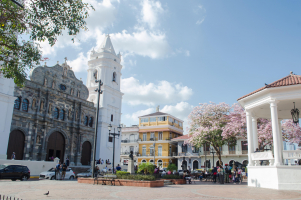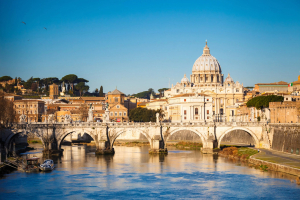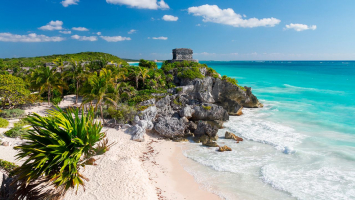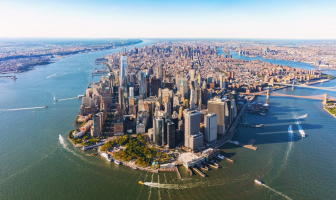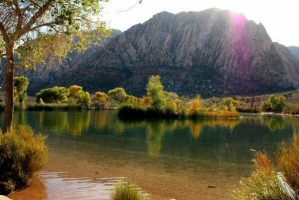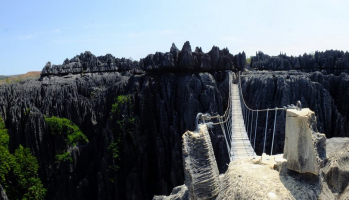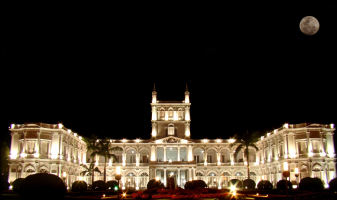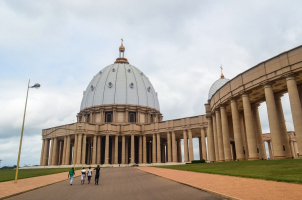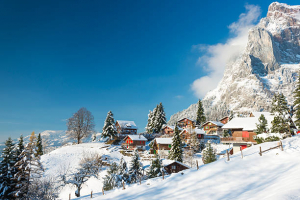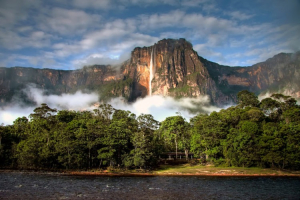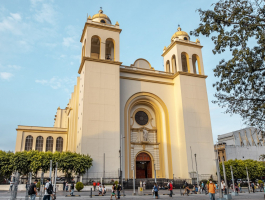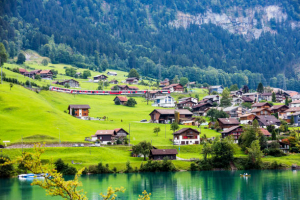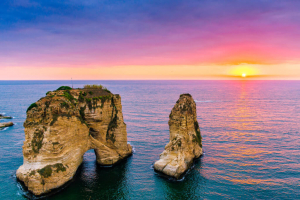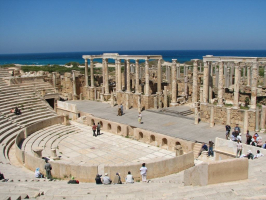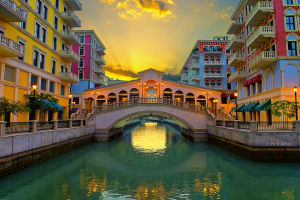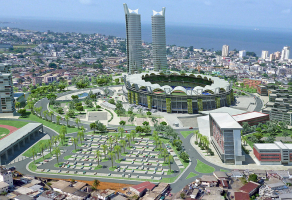Top 10 Best Places to Visit in Vatican City
At barely 0.44 square kilometers in size, the Vatican has been an autonomous state since 1929, when the Pope and Mussolini made an agreement. Prioritizing your ... read more...sightseeing is crucial because there are enough attractions and activities inside its boundaries to keep visitors occupied for several days. The Museum of Secular Art's antique sculpture, the Museum of Sacred Art's discoveries from catacombs and early Christian churches, the Map Gallery, a gallery of candelabras and tapestries, and minor collections in addition to the larger institutions will appeal to specialist interests. Toplist has compiled a list of the Best Places to Visit in Vatican City.
-
The majestic St. Peter's Basilica, the hub of the Vatican and one of the top tourist destinations, was constructed between the 16th and 18th century to replace earlier structures that had been built beginning in 326 on the site where it is believed that St. Peter is buried. Ironically, Martin Luther was spurred to start the Protestant Reformation by the selling of indulgences to pay for this structure in the 16th century. This is one of the Best Places to Visit in Vatican City.
Before you even step foot inside the church, you can see the works of renowned artists: a Bernini mosaic fragment over the main doorway and an equestrian statue of Constantine on a horse in the portico. Both the twin bronze doors and it are original to the old church.
A congregation of more than 60,000 people may fit inside the enormous nave, which is 185 meters long and 46 meters tall and rises to a dome 119 meters above. Compare it to other large churches that have their floor measurements marked. Behind reinforced glass, to your right, is Michelangelo's well-known Pietà, which he created when he was only 24 years old. The lavishly decorated Chapel of the Sacrament, which also has Bernini's tabernacle and his rival Borromini's bronze grille, is also on the right.
The Papal Altar is located underneath Michelangelo's dome, which is supported by four enormous pentagonal piers, and Bernini's beautiful Baroque bronze baldacchino (canopy). St. Peter's tomb is located below. Bernini also created the bronze throne in the apse, which is surrounded by papal tombs. Other Popes' tombs can be found in the right aisle.
The roof's stairs are located close to the Baptistery, and a lift can be found outside close to the Gregorian Chapel. From the roof, you can ascend 330 steep steps within the dome to the lantern for a closer look at the dome's architecture and stunning views of St. Peter's Square. The Vatican Necropolis is located beneath St. Peter's Basilica and is home to the graves of various prior popes as well as what is thought to be St. Peter's remains.Address: St. Peter's Square Vatican City
Phone: +39 338 346 5230
Opening hours: 8:30 am - 6 pm
Rating: 5.0/5.0, 41332 Tripadvisor reviews
Website: www.stpetersbasilica.info
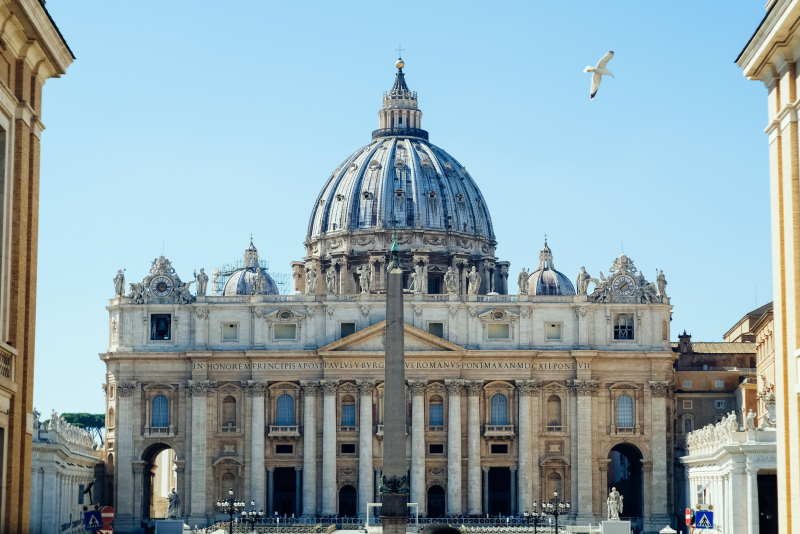
Image by Fabio Fistarol via unsplash.com 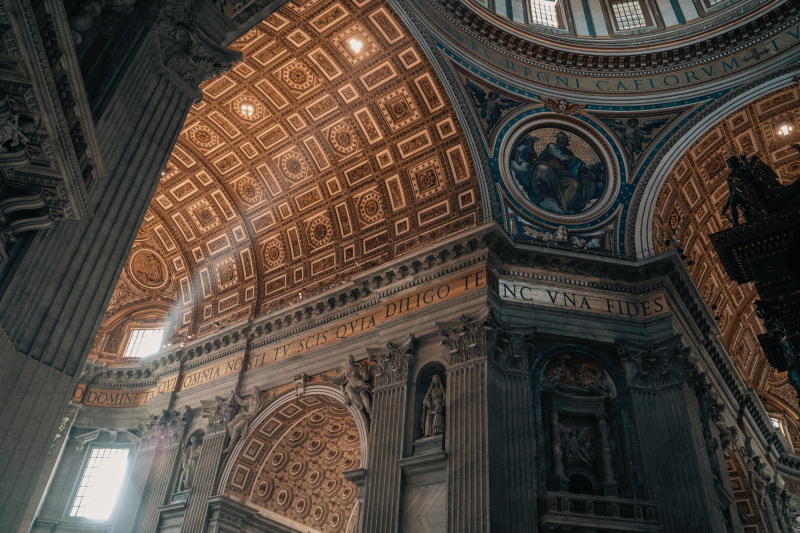
Image by Mike Hsieh via unsplash.com -
The Pinacoteca houses 16 rooms filled with priceless artwork from the Middle Ages to contemporary pieces, despite the fact that Napoleon stole many of its treasures. On October 27, 1932, the new Vatican Pinacoteca (Art Museum) opened its doors in a structure designed by architect Luca Beltrami specifically for Pope Pius XI. It was constructed in Square Garden in the nineteenth century in a location thought to be suitable for ensuring the best lighting conditions for both the correct maintenance of the works and their maximum aesthetic enhancement. The location is isolated and entirely surrounded by avenues.
The images, which are arranged in chronological sequence, provide a superb overview of the evolution of Western art. The collection includes works by some of the finest painters in Italian history, including Giotto, Fra Angelico, Melozzo da Forli, Perugino, Raphael, Leonardo, Tiziano, Veronese, Caravaggio, and Crespi.
There includes a triptych by Filippo Lippi, a Madonna by Perugino, and Pinturicchio's Coronation of the Virgin. Raphael's Madonna of Foligno, his final painting, the renowned Transfiguration from 1517, and tapestries from his cartoons are all displayed together in a single room. Among the portraits in the Pinacoteca are an incomplete St. Jerome by Leonardo da Vinci, a Madonna by Titian, and Entombment by Caravaggio. This is one of the best places to visit in Vatican.Address: WF42+7WV, Viale Centro del Bosco, 00120 Città del Vaticano, Vatican City
Phone: unknown
Opening hours: unknown
Rating: 4.8/5.0, 382 Google reviews
Website: www.museivaticani.va
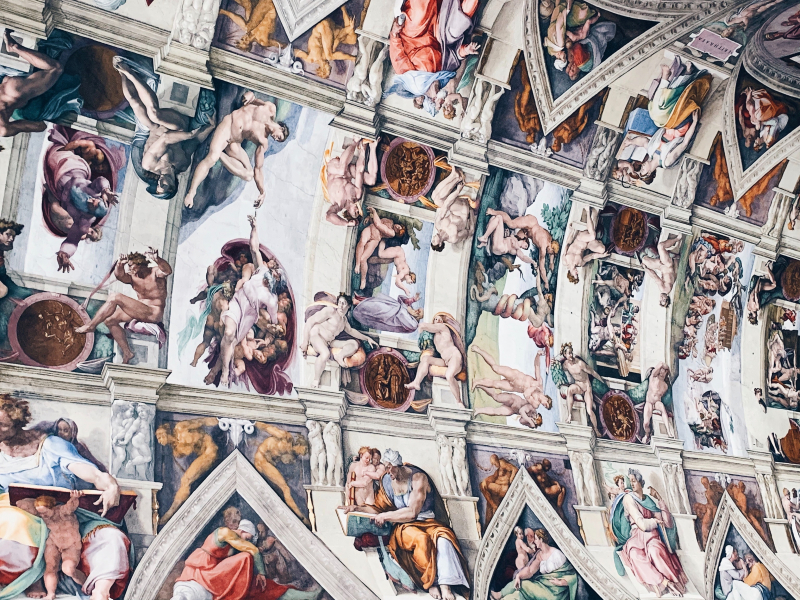
Image by Pierre Voisin via unsplash.com Video by Musei Vaticani via youtube.com -
One of the several museums found at the Vatican is the Georgian Egyptian Museum. There are nine rooms in the Belvedere Palace where you can find numerous exceptional Egyptian artifacts that were acquired over the course of the 18th and 19th centuries from private collections, the Villa Adriana in Tivoli, the city of Rome, and other locations. The Georgian Egyptian Museum was established in 1839 at the Laterano Palace by Pope Gregory XVI, who was known for having a keen interest in Egyptology. In 1884, Pope John XXIII moved the museum to the Vatican, where it is now.
Artifacts from as far back as 2600 BC are now visible. Many papyrus, pottery, cases, funerary objects, tablets with well-preserved hieroglyphic inscriptions, ancient pillars, statues, and beautiful sarcophagi are among them. The artefacts recovered from Hadrian's Villa have their own section (117-138 AD).
Also available are statues of Egyptian gods and goddesses in excellent condition. Near the conclusion of the collection, you'll also find smaller antiquities, including items from Mesopotamia, Palestine, Syria, and Assyria, as well as slab fragments with lovely ornamental reliefs.
Overall, the Georgian Egyptian Museum is an excellent collection that Egyptology enthusiasts will greatly enjoy and value. You can come here for a quick look-see and spend 10 to 15 minutes. You should spend 30-45 minutes on a more detailed tour, and even longer if this is a particular interest of yours.
Address: Vatican Boulevard - 00165 Vatican City (Rome)
Phone: +39 06 6988 4676
Opening hours: 9 am - 6 pm
Rating: 4.7/5.0, 88 Tripadvisor reviews
Website: www.museivaticani.va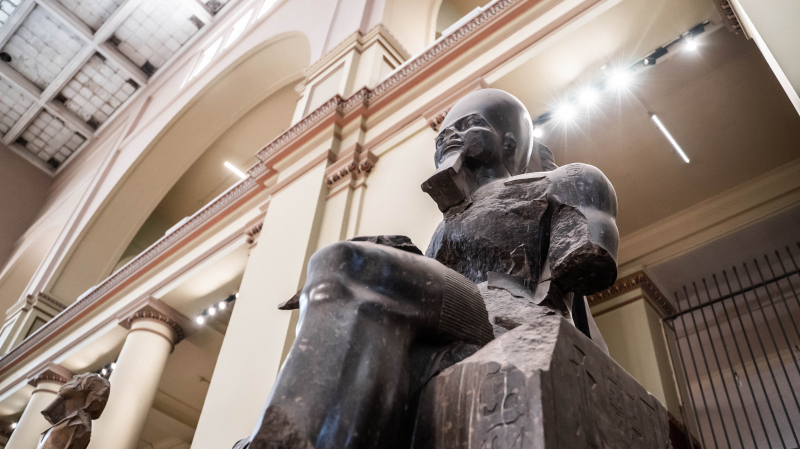
Image by 2H Media via unsplash.com (photo is used for illustration only) Video by Eric Clark's Travel Videos via youtube.com -
The Gregorian Etruscan Museum, established by Pope Gregory XVI and opened on February 2, 1837, was one of the first institutions specifically devoted to Etruscan antiquities. The museum primarily preserves artifacts discovered during excavations conducted in the years prior on the sites of some of the most significant ancient Etruscan cities, which were at the time a part of the Papal State's territory. The new museums also accepted works that had previously been in the Vatican and had a long history in other collections.
Once the Papal State ended in 1870, the Gregorian Etruscan Museum only seldom experienced development, but these instances were significant since they saw the addition of the collections of Falcioni (1898), Benedetto Guglielmi (1935), Mario Astarita (1967), and Giacinto Guglielmi (1987).
It is possible to reconstruct the ancient history of the Etruscan people from the Iron Age (ninth century B.C.) until their progressive and final convergence with the Roman state in the first century B.C. through the works on display, which document thriving craftsmanship and a particular form of artistic civilisation.
The Palazzetto del Belvedere of Innocent VIII Cibo (1484–1492), designed by Pollaiolo, and the apartment of Tor dei Venti of Pius IV Medici (1559–1555), begun by Michelangelo and Girolamo da Carpi and completed by Pirro Ligorio, house the Gregorian Etruscan Museum. It is possible to observe Bramante's enormous double-helix staircase, which he started building in 1512, from inside the museum.The original sixteenth-century pictorial cycles, frescoes by Federico Barocci and Federico Zuccari (1563) and by Santi di Tito and Niccol Circignani delle Pomarance (1564), and important tempera murals from the end of the eighteenth century may also be found in the halls.
Address: Vatican Boulevard - 00165 Vatican City (Rome)
Phone: unknown
Opening hours: 09.00 a.m. – 06.00 p.m.
Rating: 4.6/5.0, 8 Tripadvisor reviews
Website: www.museivaticani.va
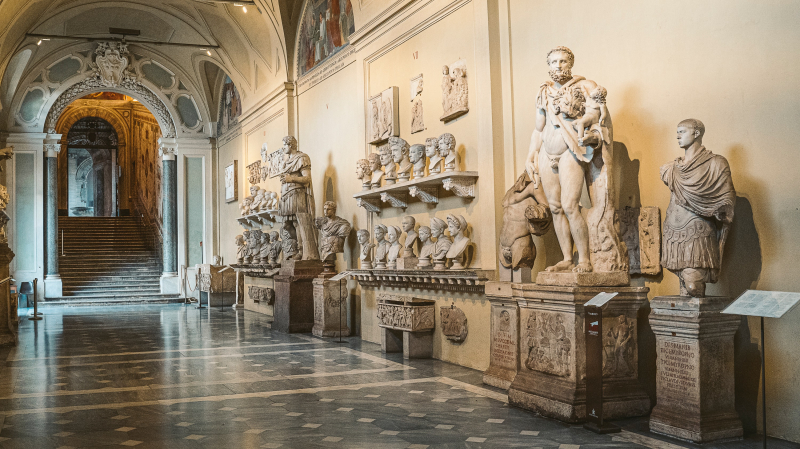
Image by Andrea Zanenga via pexels.com (photo is used for illustration only) Video by Musei Vaticani via youtube.com -
Those museums can be seen as one of the Best Places to Visit in Vatican City. The public museums of the Vatican City are known as the Vatican Museums. They exhibit items from the vast collection that the Catholic Church and the papacy collected over the years, which includes some of the most famous Roman sculptures and the most significant works of Renaissance art in the entire world. The museums have 640 employees who work in 40 distinct administrative, scholarly, and restoration departments, and they house some 70,000 pieces, of which 20,000 are on show. There are a total of 24 galleries, or chambers, with the Sistine Chapel being, notably, the last one seen inside the Museum.
The Vatican Museums contain 16 rooms filled with precious artwork from the Middle Ages to contemporary pieces, despite the fact that Napoleon stole many of its treasures from there. The images, which are arranged in chronological sequence, provide a superb overview of the evolution of Western art. Among the works of art from the Middle Ages are paintings from Byzantium, Siena, Umbria, and Tuscany, a triptych by Giotto, and a Madonna and St. Nicholas of Bari by Fra Angelico.There includes a triptych by Filippo Lippi, a Madonna by Perugino, and Pinturicchio's Coronation of the Virgin. Raphael's Madonna of Foligno, his final painting, the renowned Transfiguration from 1517, and tapestries from his cartoons are all displayed together in a single room. Among the portraits are an incomplete St. Jerome by Leonardo da Vinci, a Madonna by Titian, and Entombment by Caravaggio.
Address: Viale Vaticano, 00120 Vatican City, Italy
Phone: +39 06 6988 4676
Opening hours: 9 am - 6 pm
Rating: 4.5/5.0, 40435 Tripadvisor reviews
Website: www.museivaticani.va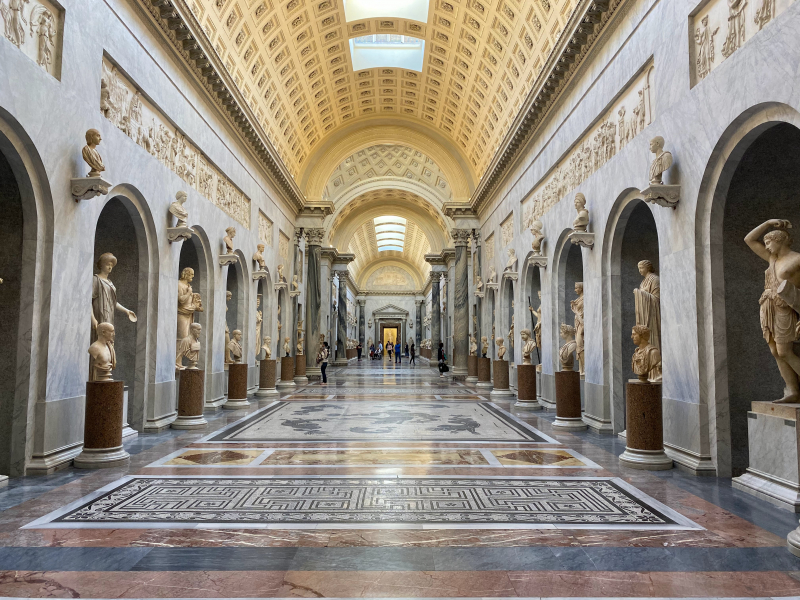
Image by Corey Buckley via unsplash.com 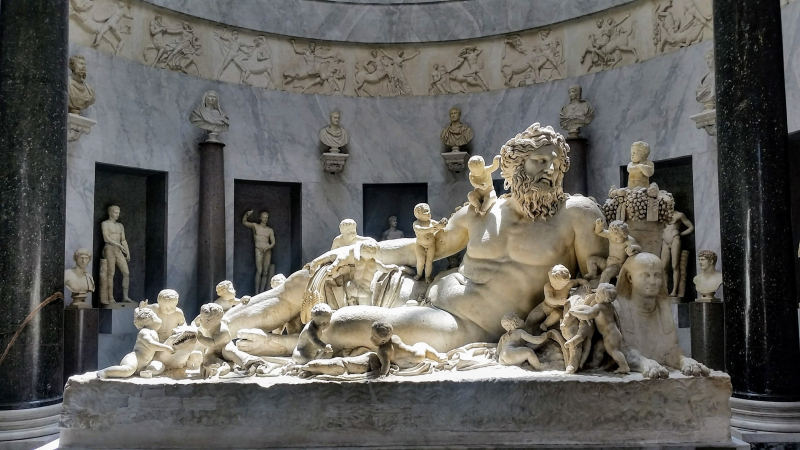
Image by Francisco Ghisletti via unsplash.com -
The Sistine Chapel is a rectangular chamber that was constructed by Pope Sixtus IV between 1473 and 1484. It serves as the Pope's home chapel and is also used for liturgies and special occasions. The conclave to choose the next Pope is conducted here upon the death of the current Pope. The ceiling and wall frescoes by Michelangelo and others, which are regarded as the best examples of Renaissance art, underwent extensive restoration work between 1980 and 1994. This work involved removing layers of overpainting, varnish, grease, and candle soot to reveal the frescoes' vibrant original colors.
Large murals depicting Biblical stories against a backdrop of Umbrian and Tuscan scenery are painted on the side walls for Sixtus IV by the most renowned artists of the time, including Perugino, Botticelli, Rosselli, Pinturicchio, Signorelli, and Ghirlandaio. The concepts of humanism, which acknowledge people as unique individuals who play significant roles in history, are already evident in these paintings from the late fifteenth century. Scenes from the Old and New Testaments are displayed on the left and right walls, respectively.
Between 1508 and 1512, during the pontificate of Pope Julius II, Michelangelo painted the frescoes on the ceiling of Sistine Chapel nearly entirely without the assistance of helpers. The ambitious plan of Michelangelo was to show the Creation as it appears in the book of Genesis, starting with God dividing light from darkness, making the sun and moon, dividing land from the sea, creating Adam and then Eve, and continuing through the account of Noah.The prophets and sibyls are depicted as enormous figures below in the vaulting. The enormous fresco on the altar wall, which depicts the Last Judgment, the conclusion of the world's story, was started by Michelangelo in 1534. It ranks as one of the pinnacles of European painting due to its dramatic presentation and artistic skill.
Address: Viale Vaticano, 00165 Vatican City Italy
Phone: +39 06 6988 4676
Opening hours: 9:00 AM - 4:00 PM
Rating: 4.5/5.0, 20918 Tripadvisor reviews
Website: https://www.museivaticani.va/content/museivaticani/en.html
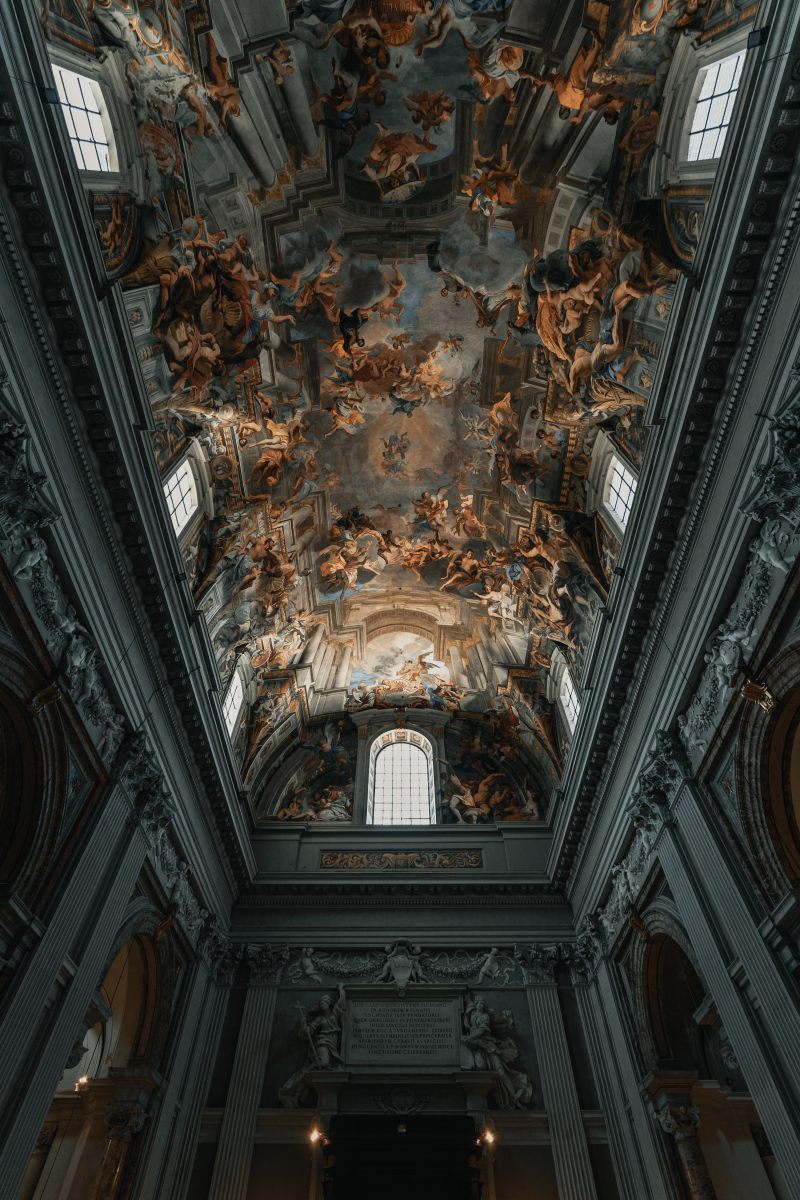
Image by Clay Banks via unsplash.com Video by CNN via youtube.com -
The Gardens of Vatican City, often known colloquially as the Vatican Gardens in Vatican City, are exclusive urban parks and gardens in the west of the country that make up more than half of the entire country. They are privately held by the Pope. Among the gardens are some structures, including the Governor's Palace and the Vatican Radio. Over half of the city, or 23 hectares (57 acres), is taken up by the gardens. North, South, and West of the region are delimited by stone walls. The Renaissance and Baroque periods were used to create the gardens and parks, which are now embellished with statues and fountains.
The original Vatican Gardens were built in the 13th century as a place of quiet contemplation for Pope Nicholas II. The orchards, grassy areas, and planted gardens now rival the most exquisite gardens in Italy in beauty and occupy about half of the tiny city-state. This is one of the Best Places to Visit in Vatican City.
Throughout the walks, guests will see numerous individually potted plants that hold gorgeous azaleas and other luscious flowers, in addition to the traditional French Garden. Many rare trees, including an Australian silk-oak, as well as numerous trees that were sent as gifts by official visitors are planted among them and in the orchard.The olive tree, which was given by the State of Israel to represent friendly relations with the head of the Catholic Church, is perhaps the most notable of these plants. The Vatican Museum must be contacted in advance to schedule tours of the Vatican garden.
Address: Vaticano Street - 00120 Vatican City
Phone: +39-0669884676
Opening hours: 9 am - 6 pm
Rating: 4.5/5.0, 14519 Triphobo reviews
Website: www.turismoroma.it
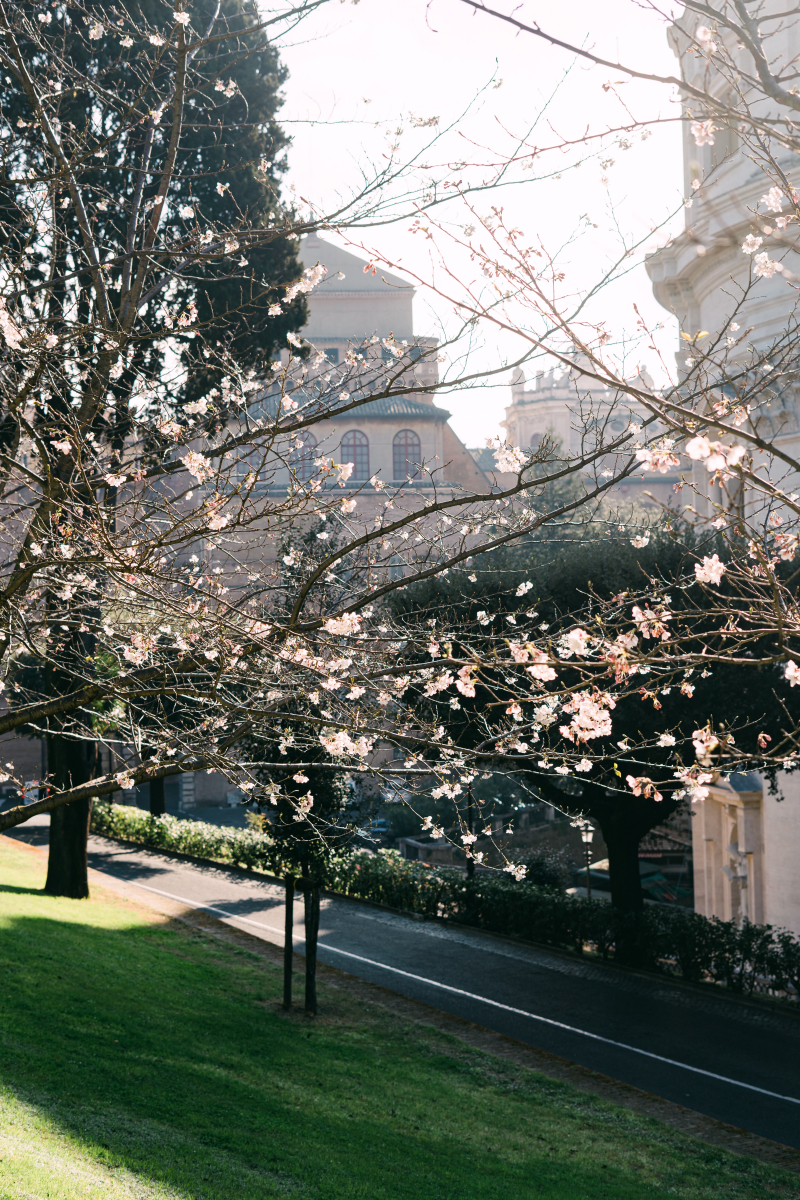
Image by Gabriella Clare Marino via unsplash.com Video by D&B TRAVELS via youtube.com -
One of the biggest and most stunning squares in the entire globe is St. Peter's Square. Between 1656 and 1667, Bernini planned out the St. Peter's Square in front of St. Peter's Basilica to create a location for pilgrims from throughout the world to congregate. It still does an excellent job of fulfilling that function and is completely packed on Easter Sunday and other significant days.
The huge oval space is 372 meters long and is surrounded by semicircular colonnades at either end. A railing with 140 saint sculptures adorns the top of the colonnades. A 25.5-meter Egyptian obelisk that was transported from Heliopolis and placed in the center of the oval by Caligula in AD 39 is surrounded by fountains on either side. Since the monument weighs 350 tons, moving it here in 1586 was no easy task.
Yet, the basilica's facade is what draws attention because it is from its central balcony that the Pope gives blessings and announces beatifications and canonizations. The senior cardinal of the College of Cardinals also announces the name of the new Pope chosen by the conclave from this location. The Via della Conciliazione, a lengthy boulevard that starts in the Castel Sant'Angelo, is the most picturesque route one take to go to St. Peter's Square.Address: Piazza San Pietro, 00120 Vatican City Italy
Phone: unknown
Opening hours: unknown
Rating: 4.5/5.0, 8919 Tripadvisor reviews
Website: https://www.vaticanstate.va/it/monumenti/basilica-di-san-pietro/la-piazza.html
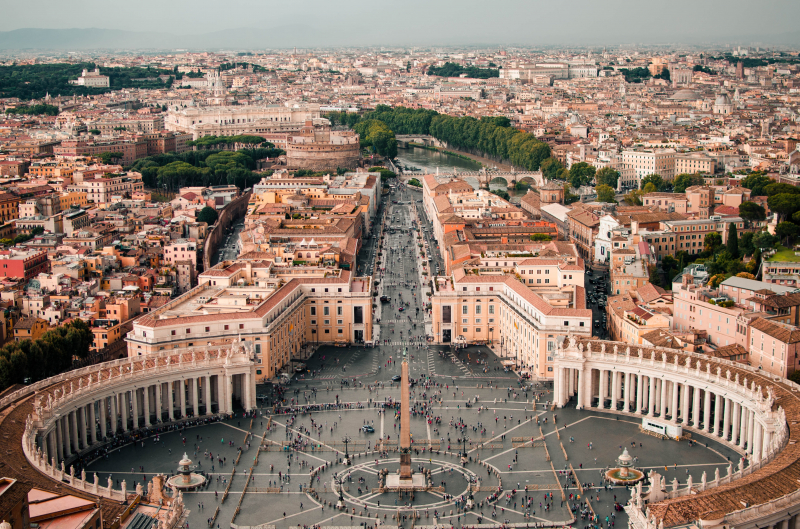
Image by Caleb Miller via unsplash.com 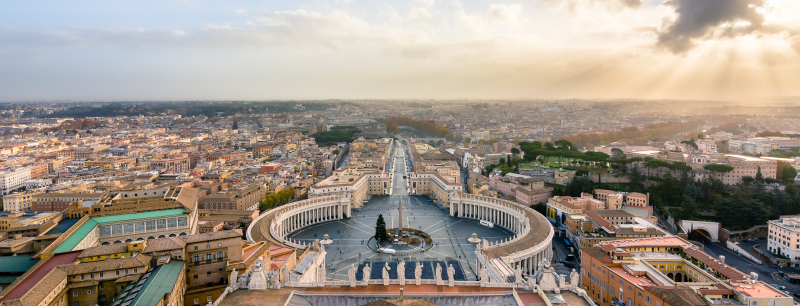
Image by Alan Liu via unsplash.com -
Between 5 and 12 meters below Saint Peter's Basilica, the Vatican Necropolis is located beneath the Vatican City. Parts of an Imperial-era necropolis were discovered during archaeological excavations under Saint Peter's that the Vatican supported between 1940 and 1949. Pontiff Pius XI asked for the construction to be done because he wanted to be buried as close to Peter the Apostle as possible. Moreover, it is where the Julii Tomb, which dates to the third or fourth century, is located. The necropolis was once a cemetery with open-air tombs and mausolea rather than one of Rome's Catacombs.
The Vatican Necropolis, which are situated on the ground floor of the former Constantinian basilica and were created as a result of the building of St. Peter's Basilica, should not be mistaken with the Vatican Necropolis. A wealth of historical artifacts can be found beneath St. Peter's cathedral's imposing dome and priceless frescoes. Many people are aware of the papal grottoes, which are private chapels beneath the cathedral and contain the tombs of former popes, as well as the 12th-century church that stands next to them.Some people are unaware of the huge ruins that have been discovered even further beneath the surface of the Earth, showing burial grounds dating back to the first century BCE. The first level up from the bottom has both pagan and Christian burials as well as remnants from the fifth century, including stone crypts and arches. The deepest level of the three is a pagan burial place.
The cemetery thought to hold Saint Peter's own remains, a relic that the Vatican is still painstakingly excavating, is the most significant find, though. Each day, only a certain number of visitors are permitted, and tickets must often be obtained directly from the Vatican Excavations Office.
Address: Piazza San Pietro Beneath St. Peter’s Basilica, 00120 Vatican City Italy
Phone: unknown
Opening hours: 9:00 AM - 6:00 PM
Rating: 4.5/5.0, 877 Tripadvisor reviews
Website: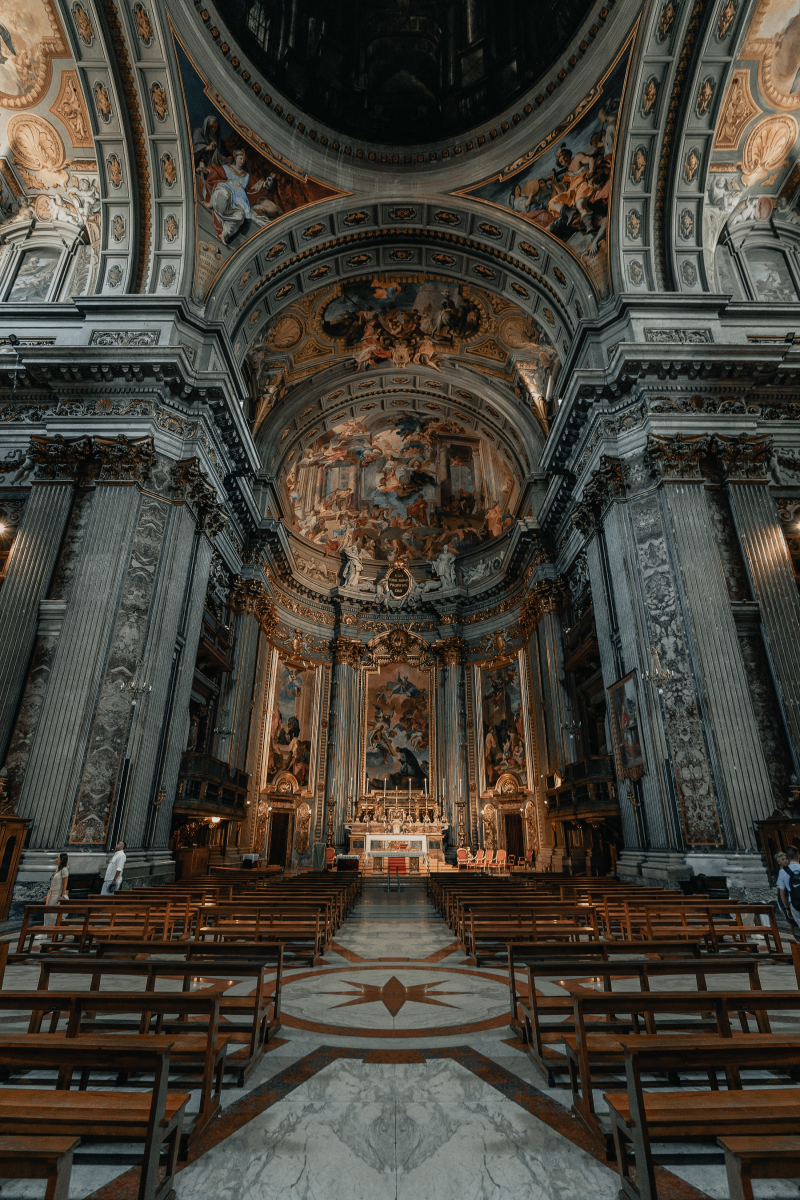
Image by Clay Banks via unsplash.com (photo is used for illustration only) Video by The CatholicTV Network via youtube.com -
The library of the Holy See is located in Vatican City and is called the Vatican Apostolic Library, also referred to as the Vatican Library or the Vat. With 7,000 incunabula (printed before 1501), 25,000 medieval handwritten books, and 80,000 manuscripts that have been gathered since the library's foundation in 1450, the Vatican Library is the richest in the world in terms of the worth of its contents. And that only includes the older volumes; it does not include all the publications it has that date back to the 15th century.
You may view some of its most priceless artifacts in its Domenico Fontana-constructed, 70-meter-long hall, including stunning hand-illuminated Gospels, Biblical codices, early printed books, parchment manuscripts, and ancient scrolls and papyri. Also, the Vatican Apostolic library now offers a larger selection of pontifical medals and coins.
A research library for history, law, philosophy, science, and religion is the Vatican Library. The Vatican Library is accessible to anyone who may provide proof of their credentials and research requirements. Pages from books published between 1801 and 1990 may be requested in person or by mail for private study.Address: Cortile Belvedere, 00120 Città del Vaticano, Vatican City
Phone: +390669879411
Opening hours: Monday, 9 AM–5:20 PM
Rating: 4.5/5.0, 64 Tripadvisor reviews
Website: https://www.vaticanlibrary.va/

Image by Thomas Kelley via unsplash.com Video by ROME REPORTS in English via youtube.com












